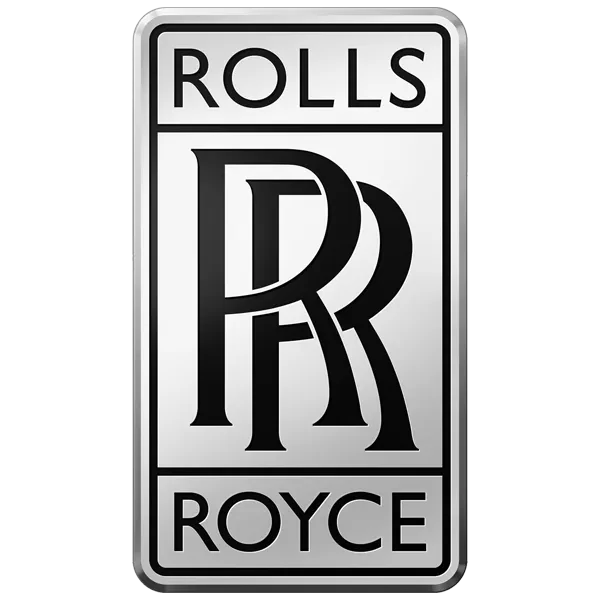How to Register an Imported Car in the UAE

Planning to import a car into the Emirates but are unsure of the legalities, costs, & requirements? Don’t worry — in reality — it isn’t as complex as it seems. This step-by-step guide walks you through six steps on how to register an imported car in the UAE. Whether you’re just seeking information or seriously invested in importing your beloved vehicle from abroad, you’ll learn everything you need to accomplish your goal. Let’s dive in.
How to register imported cars in the UAE?
Follow these steps to register an imported car in the United Arab Emirates (UAE):
Step 1: Obtain a No Objection Certificate (NOC).
Step 2: Arrange Shipping to the UAE
Step 3: Complete Customs Clearance
Step 4: Pass Vehicle Inspection
Step 5: Secure Mandatory Insurance
Step 6: Register the Vehicle
Step-by-Step Process to Register an Imported Car in the UAE
Now that we've covered the basics, let's dive into the detailed, step-by-step process of registering your imported vehicle in the Emirates. Follow these six steps to ensure a smooth journey from import to on the road.
Step 1: Obtain a No Objection Certificate (NOC)
The first step is to obtain a NOC from the UAE import authorities/bodies, such as the Ministry of Industry and Advanced Technology (MOIAT) or the Dubai Road and Transport Authority (RTA) for specific cases. This NOC ensures your car (vehicle) complies with key UAE import regulations, such as:
Left-hand drive: your car must be a left-hand drive.
Age limit: The car must not be older than 10 years from the date of manufacture (exceptions may apply for classic cars).
No salvage title: The vehicle must not have a salvaged, flood-damaged, or rebuilt title.
Obtaining this NOC before shipping your vehicle is a vital precaution that can save you significant time and money by preventing your car from being rejected at customs. You can typically apply for this through the respective emirate's traffic authority, such as the RTA in Dubai.
You will need the following documents to obtain a No Objection Certificate (NOC) to import vehicles into the UAE:
A valid passport,
UAE resident visa,
Vehicle invoice,
Certificate of origin,
Export certificate from the country of origin, and
Shipping receipt (This document is required later at customs clearance, but is often included in the initial set of documents to have ready).
Ensure all these documents are accurate and updated to prevent delays.
Step 2: Arrange Shipping to the UAE
After securing the No Objection Certificate (NOC), the next logical step is to arrange the shipping of your vehicle to one of the UAE’s major ports, such as Jebel Ali in Dubai, Port Khalifa in Abu Dhabi, or Port Khalid in Sharjah through a reputable shipping company. Prior to shipping, have the car inspected in its country of origin to confirm it meets UAE safety and emission requirements, as non-compliance may lead to rejection at customs.
You have several options for shipping your car, depending on your budget, timeline, and the type of vehicle.
Ro-Ro (Roll-on, Roll-off) Shipping: It is the most common and cost-effective method for shipping standard vehicles to the Emirates. It is also a secure and efficient way to transport vehicles that are in working condition.
Container Shipping: It offers a higher level of security to your vehicle with a dedicated or shared container. A dedicated container is costlier but provides maximum protection, while a shared container (consolidated shipment) is a more affordable option in a shared space.
Air Freight: While significantly more expensive, air freight is the fastest option for shipping a vehicle. This method is typically reserved for high-value, luxury, or classic cars where speed is the top priority.
Compare quotes and choose a reputable company that specializes in international car transport, meeting your shipping requirements. They will handle the logistics, from preparing the necessary paperwork (like the Bill of Lading) to advising you on transit times and insurance options. Coordinate with the shipping company to deliver the vehicle to the UAE. Proper preparation at this stage streamlines the subsequent customs clearance process.
Step 3: Complete Customs Clearance
Upon arrival at a UAE port, your car must undergo customs clearance. This step usually involves a thorough inspection by UAE customs authorities to verify compliance with import regulations. You will need to submit the following documents here:
Vehicle invoice,
Certificate of origin,
Shipping receipt (Bill of Lading),
Export certificate from the country of origin, and
Your original passport and Emirates ID.
You must understand that a 5% import tax (calculated on the total CIF value, which includes the cost of the car, insurance, and freight), based on the vehicle’s value, is a must (0% for GCC countries, if you have already had customs duty paid in another GCC country, but you must provide proof.)
Additional fees include approximately AED 4,700 for clearance, AED 700 for container inspection, and AED 60 for blue export plates, which are issued upon successful clearance. With a successful customs clearance, you will receive a Vehicle Clearance Certificate, which is a mandatory document for the next step, registration.
Step 4: Pass Vehicle Inspection
Once you clear customs, your car must undergo a safety and emission inspection at a government-approved testing center, such as Tasjeel, Wasel, Shamil, or Al Mumayaz. This step ensures the vehicle meets UAE road safety and environmental standards.
While some older sources mention a NOC from the Ministry of Finance and Industry, the primary document you need for this step is the Vehicle Clearance Certificate you received from customs. Submit documents, including your:
UAE resident visa
Emirates ID
Passport,
Driving license,
Import documents, and
Vehicle Clearance Certificate (VCC).
The inspection verifies several aspects of your vehicles, like brakes, lights, tires, and emissions. Inspection fees vary by vehicle type: AED 150 for light vehicles, AED 200 for heavy vehicles, and approximately AED 150 for motorcycles. Passing this inspection is essential for proceeding to insurance and registration.
Step 5: Secure Mandatory Insurance
The next step is obtaining a mandatory third-party liability insurance (TPL) to register your imported car in the UAE. TPL insurance is a legal prerequisite for road use, covering liabilities for accidents and damage to other people's property. While TPL is mandatory, consider comprehensive insurance, which also protects your own vehicle against damage, theft, and fire.
Contact a licensed UAE insurance provider, such as Sukoon Insurance, Orient, or ADNIC, and submit the necessary documents as requested. The cost of insurance varies based on the vehicle type, value, and provider, with TPL starting around AED 700 per year and comprehensive policies from around 2% of the car's value.
Ensure the policy is active before proceeding to registration, as proof of insurance is mandatory for the next step. This step protects both the owner and other road users, ensuring compliance with UAE traffic regulations.
Step 6: Register the Vehicle
Registering your imported vehicle with the emirate-specific authorities is the next step. You can register with the relevant authority, such as the Roads and Transport Authority (RTA) for Dubai or the Ministry of Interior (MOI) and its affiliated traffic departments in other emirates, like the Abu Dhabi or Sharjah Police.
You will need to submit the required documents, including the:
Vehicle Clearance Certificate (VCC),
Emirates ID,
Passport,
Residence visa,
Vehicle inspection report, and
Temporary blue export plates.
Pay registration fees, which vary by vehicle type: for example, approximately AED 400 for light vehicles, AED 200 for motorcycles, and up to AED 1,300 for heavy equipment. These fees usually also include a knowledge and innovation fee. Upon successful registration, the blue export plates are replaced with white UAE number plates, allowing legal road use. You will also receive a vehicle ownership card, also called Mulkiya.
Imported Car Registration UAE Requirements
Imported car registration in the UAE has two fundamental requirements, which include:
Vehicle Eligibility Requirements:
Left-Hand Drive Car.
The vehicle must be less than 10 years old from the date of manufacture.
The car must not have a salvaged, flood-damaged, or rebuilt title.
Required Documents:
Vehicle Clearance Certificate (VCC)
Certificate of Origin
Export Certificate
Original Purchase Invoice
Shipping Documents
Valid Insurance Policy
Vehicle Inspection Report
Personal Identification:
Original Passport and a copy of your UAE Resident Visa.
Original Emirates ID.
Valid UAE Driving License.
Cost of Registering Imported Vehicle in the UAE
After understanding the requirements, let’s break down the general cost of registering an imported car in the Emirates. As the total cost to register an imported car is not a single fee but a combination of duties, taxes, and service charges that are paid at different stages of the process, we’ll approach this step-wise for easier understanding.
1. Step 1 & 2: Shipping & Pre-Import
Shipping Costs:
Ro-Ro (Roll-on/Roll-off): Typically starts from around AED 4,500 for a standard sedan.
Container Shipping: Can start from AED 11,000 and go higher, depending on whether it's a shared or dedicated container.
Marine Insurance: This is a separate, optional cost to protect your vehicle during transit, usually ranging from 1.5% to 3% of the car's value.
2. Step 3: Customs Clearance
Customs Duty: 5% of the vehicle's CIF value. The CIF value is the total of the car's Cost, Insurance, and Freight.
Value Added Tax (VAT): 5% of the CIF value plus the customs duty.
Customs Declaration Fee: Approximately AED 4,700 for the declaration and clearance process.
Container Inspection Fee: Approximately AED 700 if the car arrived in a container.
Blue Export Plates: Approximately AED 60.
3. Step 4: Vehicle Inspection Fee
Light vehicles: Around AED 150.
Heavy vehicles: Around AED 200.
Motorcycles: Around AED 150.
Classic Cars: Around AED 420.
4. Step 5 & 6: Insurance & Registration
Vehicle Insurance:
Third-Party Liability: Starts from around AED 700 annually.
Comprehensive Insurance: Can start from 2% of the car's value annually.
Registration Fee:
Light vehicles: Approximately AED 400.
Motorcycles: Approximately AED 200.
Heavy equipment: Up to AED 1,300.
Plate Number Fee:
Short Plates: Around AED 35.
Long Plates: Around AED 50.
Knowledge and Innovation Fee: A standard fee of around AED 20.
Important Note: All fees and rates mentioned are subject to change. It is always best to check with the relevant government authority at the time of your import.
Tips for a Smooth Imported Vehicle Registration
Having a clear understanding of the proper steps to register an imported car in the UAE, its requirements, and costs, take a look at some of the practical tips for a seamless experience.
Always verify your vehicle's compliance before shipping it to the Emirates to avoid inspection and clearance issues.
Get your car
Obtain and maintain a proper list of documents (original, copies, and digital copies) as mentioned above. It helps avoid delays and smoothens the flow of importing your vehicles in the Emirates.
You can use online registration portals for convenience and ease of access. Here’s how you can register your vehicle digitally in the UAE.
Make sure you budget for unexpected costs/expenses, as you never know what surprises are waiting ahead. These can include additional fees for non-GCC-compliant vehicles or minor modifications required after the inspection.
Never attempt to under-declare the value of your vehicle at customs to save on fees. Authorities have sophisticated valuation systems, and this can lead to severe penalties, including fines of up to 300% of the undeclared value.
Conclusion
Registering an imported vehicle in the UAE is a fairly simple and straightforward process when you know the specifics. Having an in-depth knowledge of the processes, requirements, costs, and legalities makes your registration a seamless experience. This guide equips you with all the information to make your imported vehicle registration UAE compliant and a breeze. Make sure you follow the UAE regulations to make your import and registration hassle-free. Don’t forget to comment & share your vehicle import experiences & tell us if this guide helped you along the way.
Written by: FriendsCarRental
Published at: Tue, Aug 12, 2025 11:42 AM
Leave a Reply
Your email address will not be published. Required fields are marked *
Car Rental in Dubai
AED 2500
DAY
AED 0
MONTH
-
 SUV
SUV -
 4 Doors
4 Doors -
 5 Seats
5 Seats
- 1 Day Rental Available
- Deposit: Not Required
- Insurance Included
AED 5500
DAY
AED 0
MONTH
-
 Sports
Sports -
 2 Doors
2 Doors -
 2 Seats
2 Seats
- 1 Day Rental Available
- Deposit: Not Required
- Insurance Included
AED 1200
DAY
AED 0
MONTH
-
 SUV
SUV -
 4 Doors
4 Doors -
 5 Seats
5 Seats
- 1 Day Rental Available
- Deposit: Not Required
- Insurance Included
AED 1600
DAY
AED 0
MONTH
-
 SUV
SUV -
 4 Doors
4 Doors -
 5 Seats
5 Seats
- 1 Day Rental Available
- Deposit: Not Required
- Insurance Included
AED 1500
DAY
AED 28500
MONTH
-
 SUV
SUV -
 4 Doors
4 Doors -
 5 Seats
5 Seats
- 1 Day Rental Available
- Deposit: Not Required
- Insurance Included

 عربي
عربي
 English
English
 Français
Français
 Русский
Русский
 中国人
中国人
 Nederlands
Nederlands
 Española
Española
 Türkçe
Türkçe
 Italiana
Italiana














































